Mid-summer is the perfect time to hunt wild shelf mushrooms. Here's a few tasty morsels
A number of wild Shelf, or Bracket mushroom species, are sprinkled throughout the Northeastern states.
And the best time to hunt them is in the middle of the summer.
These wild fungi are sometimes difficult to see, and at other times, they show us the most striking colors in the forest, from the deep varnish-like purple of the Reishi mushroom, to the bright yellow/orange/pink coral of the Chicken-of-the-woods.
Just about anyone who has taken a walk in the woods, or for that matter strolled through a park, has seen these saprophytic fungi sticking out horizontally from stumps, logs and old trees. As Saprobes, they break down the compounds in dead trees.
The many types of mushrooms
People hunt the different types of Shelf mushrooms for different reasons.
There are a number of different genera or types of these Polypores, mostly hard, flat fungi which often prefer, and therefore are found growing on specific host species.
Polypores only grow on dead trees, or the dead parts of trees and old stumps.
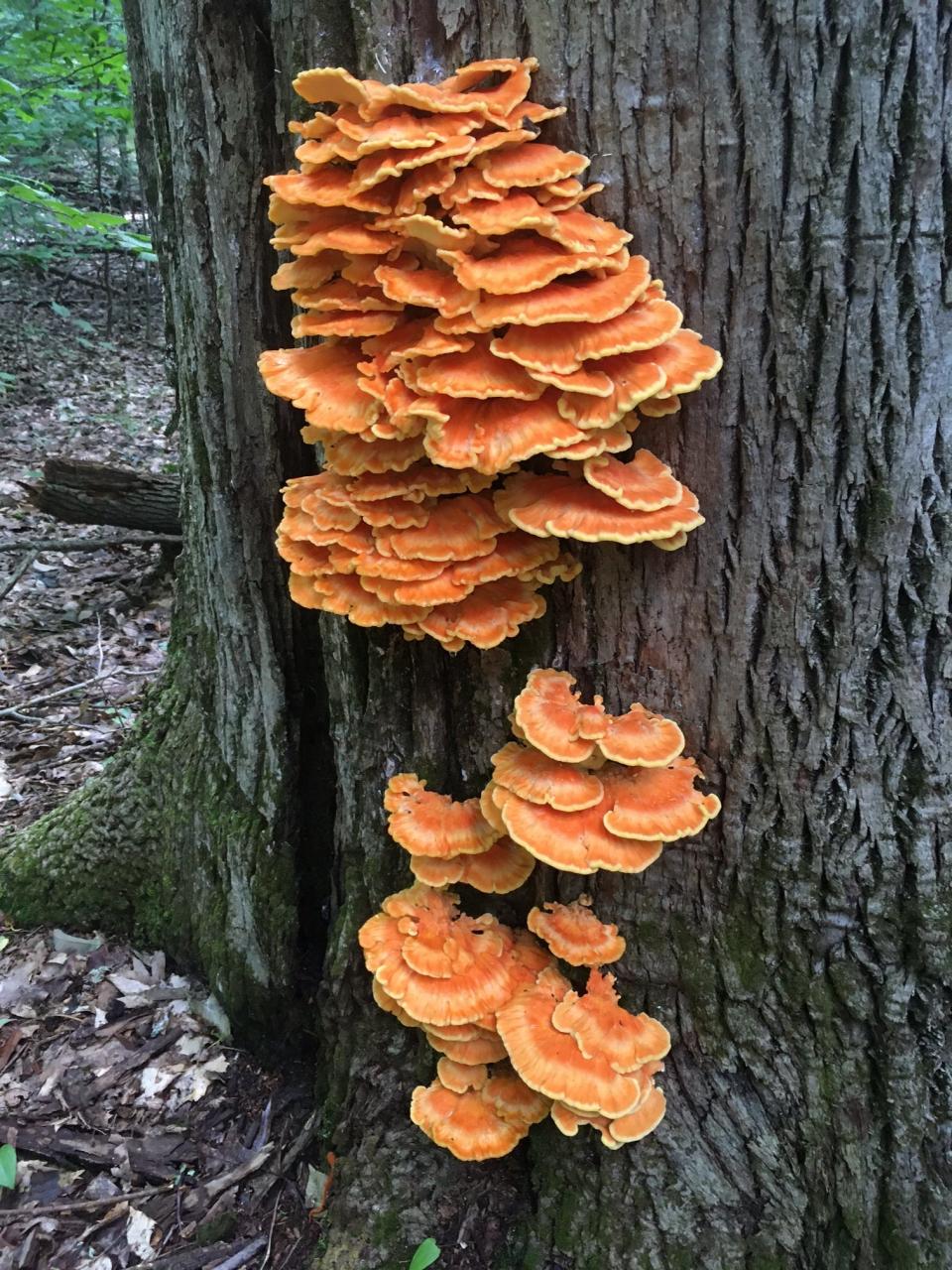
One of the most common varieties is Ganoderma applanatum, or the true Artist's Conk. They grow on hardwoods such as maple or ash. Their size runs from six inches or so to almost three feet across, with brownish gray tops and soft white underneath.
And there, artistic renderings are etched into the pore surface underneath. Once the image is finished, a coat of polyurethane or varnish is often added to preserve the image.
A close cousin of the Artist Conk is Ganoderma tsugae, or the Hemlock Varnish shelf mushroom. Their top surface, or cap, appears to be "varnished" and is typically a shiny purple to orangeish-red and only grow on the Eastern Hemlock tree, or more likely a log or stump. Herbalists consider Tsugae, or the Varnish shelf, as a "Reishi" mushroom.
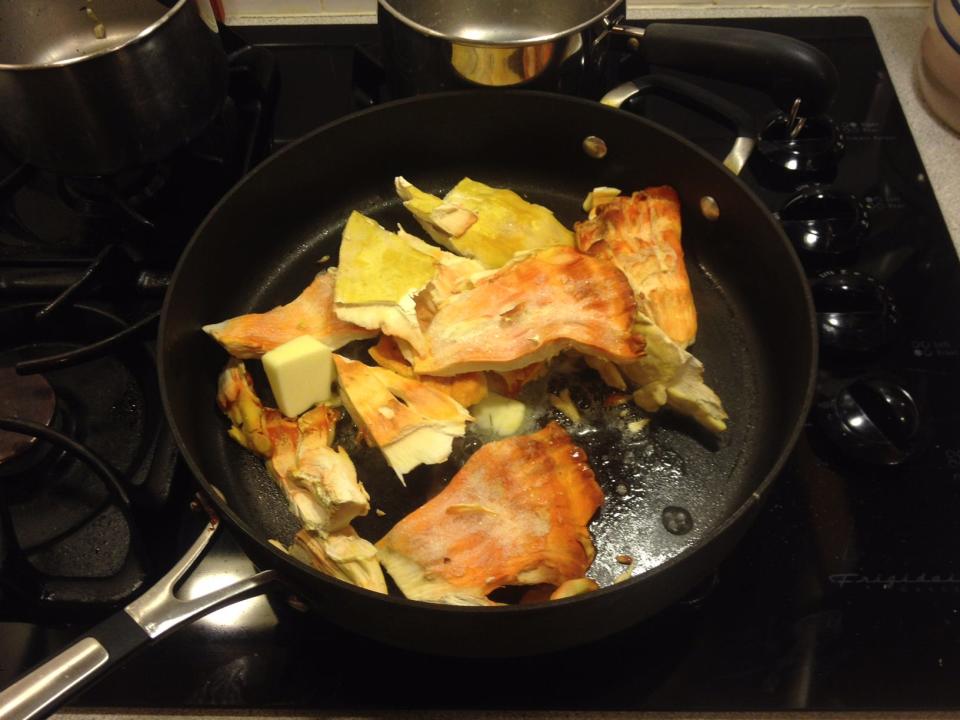
These mushrooms are not considered as just another run-of-the mill herb. Amazingly, Reishi is considered Number One, the top Superior Herb of all the natural herbs in the world by Chinese Herbal Medicine advocates. It is even ranked above ginseng and deer antler velvet.
Herbal medicines that utilize wild shelf mushrooms date back thousands of years.
Interestingly, during one of the early dynasties in China, peasants were executed for ingesting Reishi. Only the emperor of a long gone dynasty and his immediate clan were allowed to enjoy the medicinal benefits of drinking Reishi tea.
It may seem pretty far-fetched today, though true, that people risked and lost their lives for the crime of drinking a tea made from a Shelf mushroom, growing on a dead tree, that our modern culture considers as having little value.
Reishi tinctures are made by taking a small slice and placing it in a bottle of alcohol. Evidently, some of the complex compounds are broken down better by alcohol than by water and heat as in a tea.
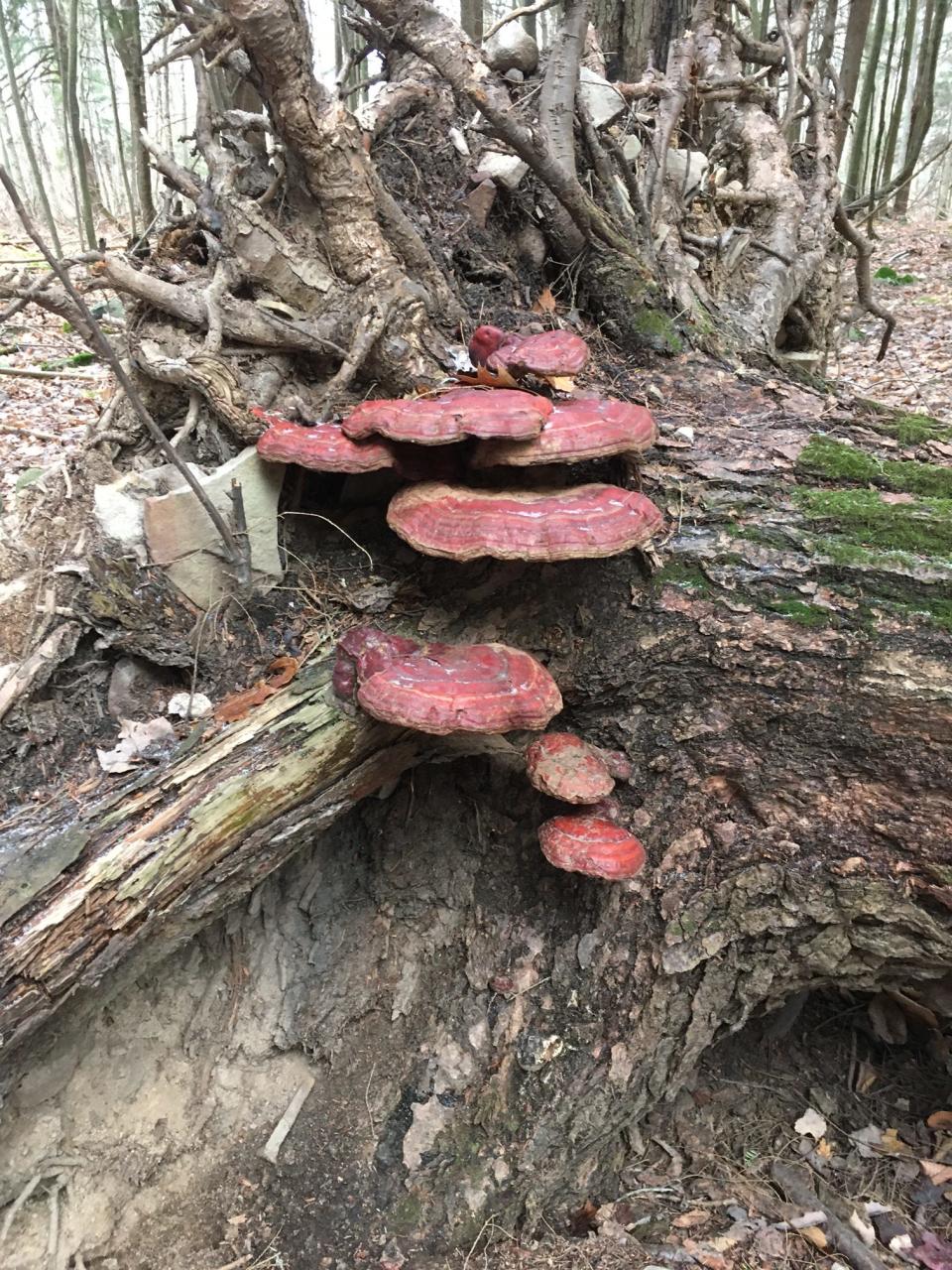
Reishi mushrooms are now artificially cultivated and sold in shops stateside and in Canada which specialize in medicinal herbs. And of course they are widely available online.
The tea (made from grinding up the woody caps) is relatively expensive but can be bought through mail-order herbal catalogs or over the internet. A quarter ounce of tea runs in the neighborhood of $25 to $30 or so.
The woody "shelf," what we see growing from the tree trunk or log, is actually very similar to a flower. It is the reproductive organ of the plant.
The actual body of the fungi, or mycelium, is spread throughout the host tree, where it runs like fine wire or threads.
Only when the fungi is ready to reproduce and spread its spores by the million, does it "flower." And at that time it is ripe to harvest by Reishi hunters (July and early August here in the Northeast).
The benefits of mushrooms
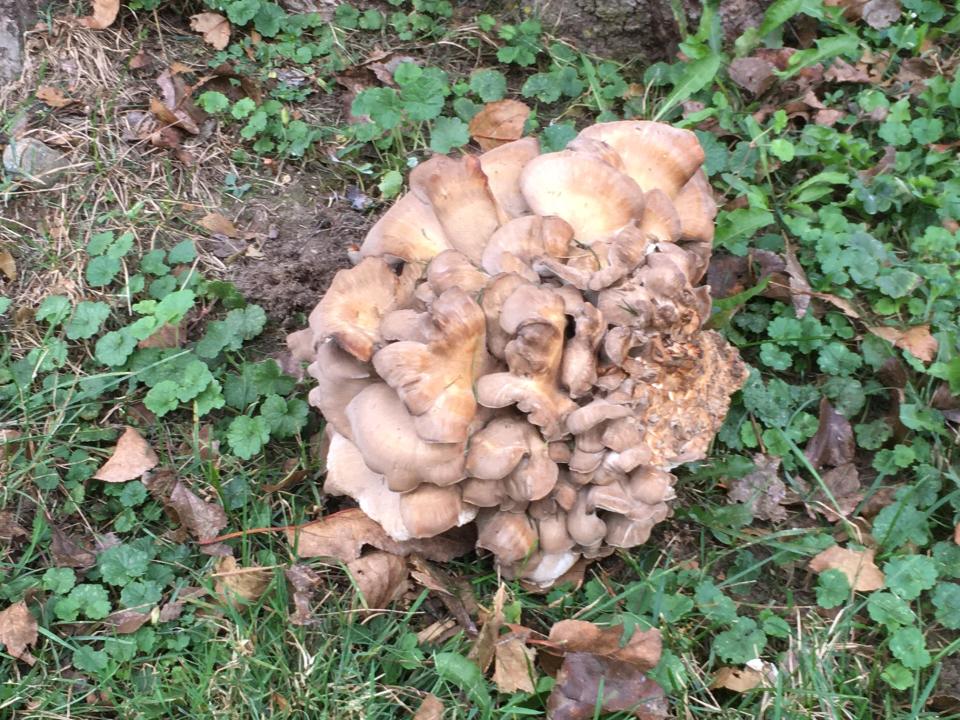
Modern research has begun to penetrate some of the mysteries hidden within the complex chemical compounds within shelf mushrooms. So far science has ascribed some of the metabolic benefits as: regulating metabolism, fighting tumors, tuning the immune system, and regulating blood pressure and blood sugar (Jong and Birmingham 1992).
Actually, the other variety of Reishi, Ganoderma lucidum, though relatively rare here in the northeast is quite common in the southern states and is considered by many a pest, attacking trees.
Other types of shelf fungus are the "Horse's hoof" or Tinder Polypore, and the vari-colored Turkey tail (Trametes versicolor), shaped like a wild turkey's fan.
The former was used as not only a medicinal tea, but a way to transport fire (a coal) from one place to another. The latter was used as a tea.
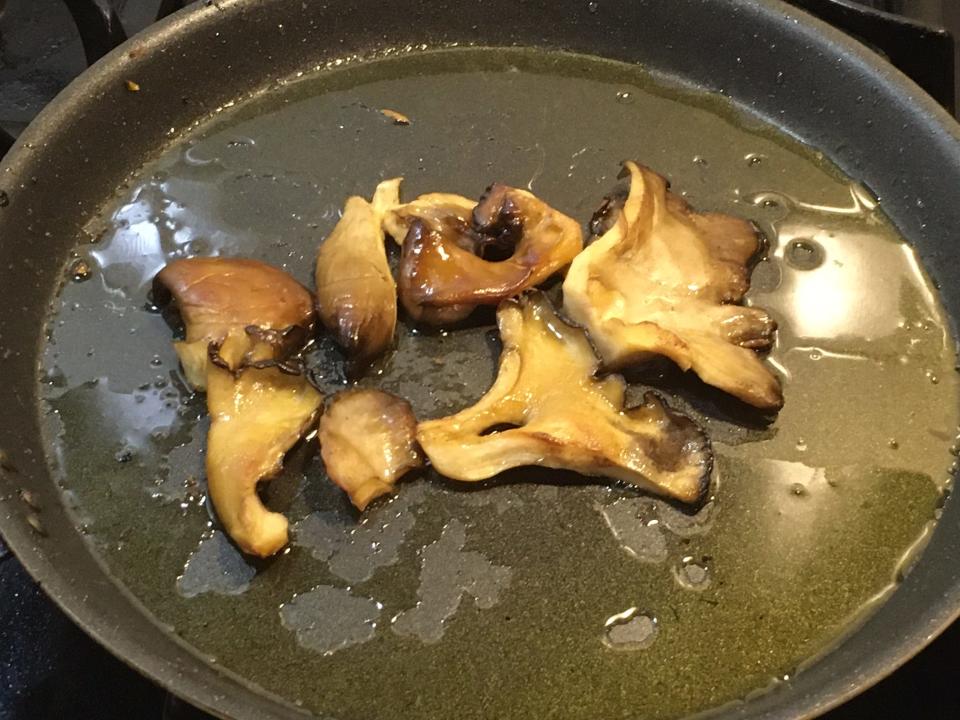
Chicken-of-the woods (Laetiporus sulphureus) and Hen-of-the-woods, Mitake, (latin name: Grifola frondosa) are two culinary delights, found in the forest and also members of the bracket, shelf mushrooms.
They are culinary delights. I like making casseroles with them, as they really do taste a lot like chicken, only better.
Be careful: Wild mushrooms can be deadly
Readers are cautioned that some people have allergic reactions to mushrooms and fungi, while most feel no effect at all.
Wild mushroom gatherers have an old saying, "There are old mushroom hunters and bold mushroom hunters, but there are no old, bold mushroom hunters." There are deadly poisonous mushrooms that look very much like edible fungi.
Though considered by some as the ultimate elixir and others as a gourmet delicacy, and yet others as a fungal infestation, an artist’s canvas, or maybe too weird to contemplate ingesting, here in the Northeastern U.S., as a group, Shelf mushrooms are as interesting and mysterious as they are ubiquitous.
— Oak Duke writes a weekly column.
This article originally appeared on The Evening Tribune: Mid-summer is the perfect time to hunt for wild shelf mushrooms

